Miracle mum Lucy Lintott Smith is a marvel who knows no bounds. At 19, she was the youngest Scot ever to be diagnosed with terminal motor neurone disease (MND) and told she was unlikely to fulfil her dream of having a child.
But Lucy proved the experts wrong.
Against all odds, she delivered a son four years ago at Aberdeen Maternity Hospital in what was thought to be the world’s first natural conception and birth after diagnosis with the “1,000-day disease”, so called because too few people survive beyond that point.
Two years later, Lucy, dubbed the MND Warrior, did it again, delivering a second healthy baby – a little girl.
Now, having landed the British Empire Medal for her efforts to help find a cure and after reaching the remarkable 10-year-survival mark, our sister title The Sunday Post revealed another staggering first.
Lucy has done it again!
Lucy Lintott Smith welcomes her third child
The 30-year-old and her husband Tommy Smith, 29, are today celebrating the arrival of their THIRD child.
The couple welcomed their beautiful baby girl on September 12 at Aberdeen Maternity Hospital where she weighed in at a healthy 6lbs 15 ounces. And Lucy and Tommy – who wish their children to be known only by their initials – are thrilled by the arrival of little SS; a sister to their two-year-old daughter AR and her four-year-old brother LJ.
The wheelchair-bound mum, who married the father of her children in front of family and friends at Inchberry Hall near Fochabers in Morayshire in May 2022, told The Sunday Post: “We could not be happier. We wanted to keep our new daughter’s arrival a secret until we had the chance to settle her in at home but we’re over the moon to be able to introduce her to the world.”
And gazing lovingly at the newborn, sleeping in her lap, she smiles: “Her brother and sister love her. They were so excited to meet her.
“My understanding is that there are other women who have been pregnant and have MND, but they were already pregnant before diagnosis. As far as I am aware, I am the first woman to actively become pregnant after being diagnosed with MND and to go on to deliver a baby naturally.
“The fact that I have done this three times is amazing and I am so grateful. Our family is complete now.”
Lucy, who has raised around £300,000 to help find a cure, knowing that it may not come in time to save her, reveals: “We found out I was pregnant at the end of January. We weren’t actively trying to get pregnant, but we were not preventing it.”
Tommy smiles: “It was just a case of if it happened, it happened and if it was meant to be, it was meant to be.”
Lucy’s pregnancy
But the pregnancy and delivery were not without problems. Lucy – who suffered sickness and appetite loss – confesses that she lived in fear of needing to have a Caesarean section.
She explains: “At 33 weeks’ gestation we found out the baby was breach. I tried everything to turn her, like playing music, and I tried every kind including the tune Let It Go, from the Disney movie Frozen – much to her sister’s delight.”
It didn’t work, but thankfully staff at the maternity hospital finally managed to turn her baby.
“It was a very tense week because Lucy faced the threat of a breach birth or a Caesarean section,” Tommy said. “She didn’t want a section because of the MND. There was no guarantee the tissue they cut through would return to normal.”
Reliving the birth, Lucy – who for all three was given an epidural, an injection into the back around the spinal cord to block pain – says: “The birth was going to be induced, but that was brought forward a week because I had a bleed. I went to Dr Gray’s Hospital in Elgin, and they sent me straight to Aberdeen Maternity Hospital.
“We arrived there on September 11 at about 7pm and that’s when they discovered I was already three centimetres dilated.
“We were told the baby was on her way and would be here in the next 24 to 48 hours.”
Lucy was taken to the labour ward the next day and given the epidural, but reveals: “It didn’t work perfectly, and I still felt pain like I’d never felt in my life before.”
It numbed the feeling in her legs which, she says, with an MND diagnosis, was “worrying.”
Tommy adds: “Every time there was a contraction, the baby’s heart rate and blood pressure dropped. Lucy’s heart rate and blood pressure were erratic too. It was very worrying.”
He had just stepped out of the delivery room to use the bathroom when he got the call to return. He smiles: “When I got there the baby was coming, we could see her head.”
To their relief, their precious new baby was born safe and well at 5.39pm that day and she and Lucy were home in Elgin 24 hours later.
Lucy says: “I always felt selfish wanting to be a mum because, at the moment, this is a terminal illness, and I may not be around as my children get older.
“But then I remember that they are already getting a better start to life as they have parents who love them and love each other, as well as four amazing grandparents.”
She says that after their first child, she wanted to give Tommy a daughter, and believes their now complete family “would all be able to look after one another.”
The couple thought hard about the slight risk of the disease affecting their children, but they believe it is worth taking.
Living with motor neurone disease
MND affects the brain and nerves and causes weakness that worsens over time. There are two types – familial and one-off or sporadic.
About one in 15 people with the disease will know of another close family member who also has it. So far, the faulty gene that causes the illness have not been triggered in any other family member.
Studies of people with sporadic MND suggest the overall risk for their children is only very slightly increased. Since the absolute lifetime risk of any individual developing MND is roughly 0.3%, a small increase in that figure still means the chance of developing the disease for anyone with a relative with sporadic MND is very low.
Lucy says: “Had my mum and dad known in advance there was a risk of me having MND, would it have been right not to have me? No. I would still have wanted my life. And knowing I have MND I have lived it to the full.”
And, watching the love of her life feed her newborn, she beams: “I felt incredible after I had her. Our little girl is the best little surprise we have ever had!”
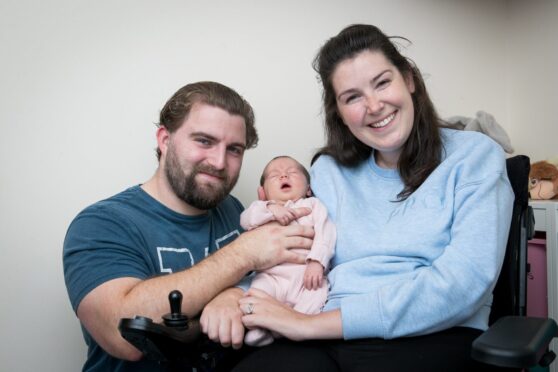
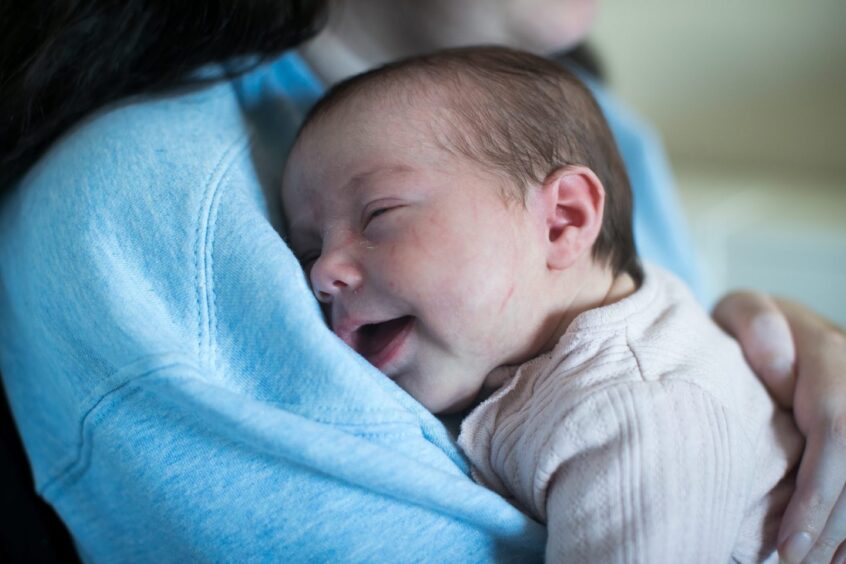
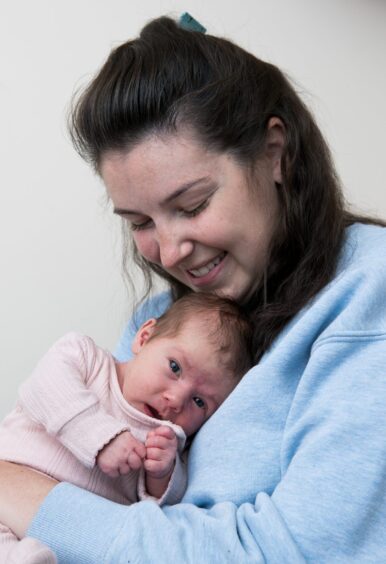
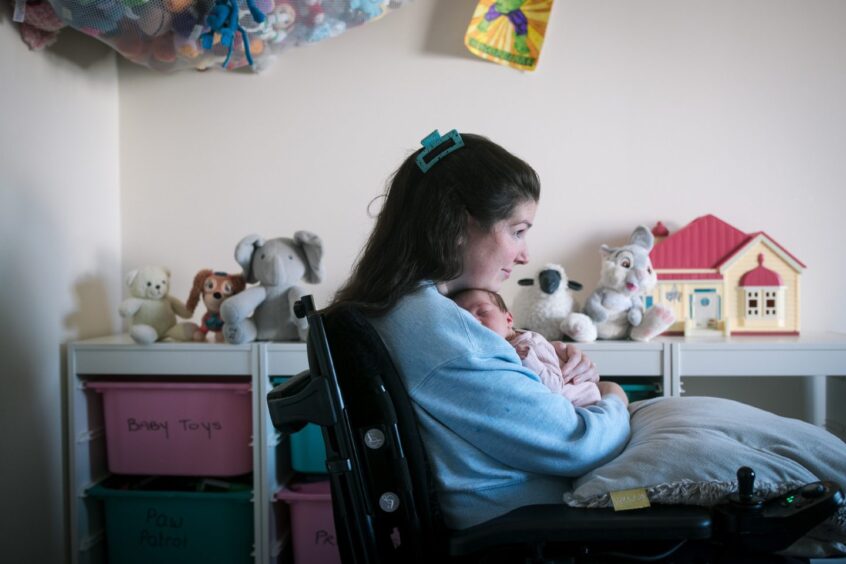
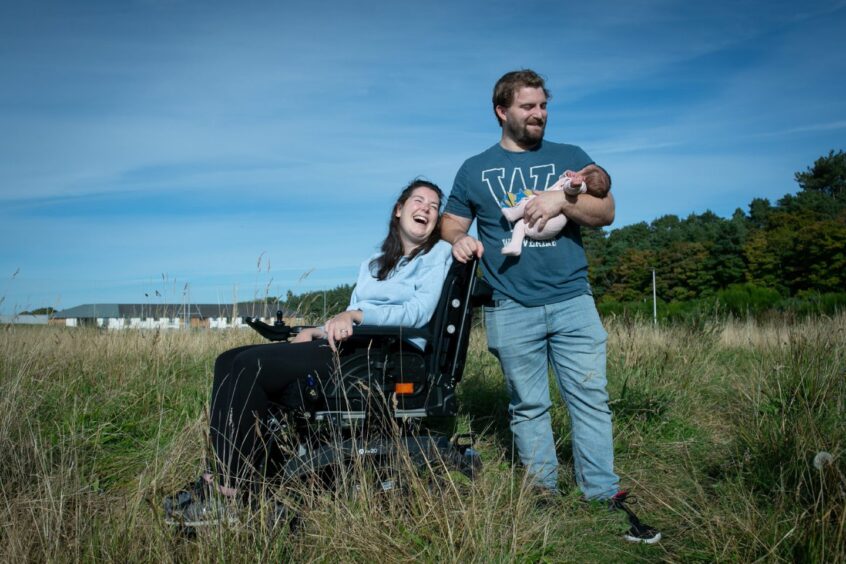
Conversation